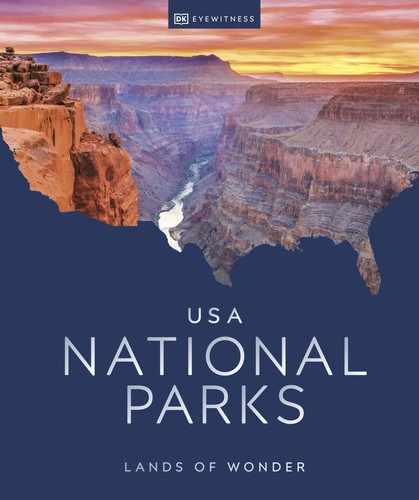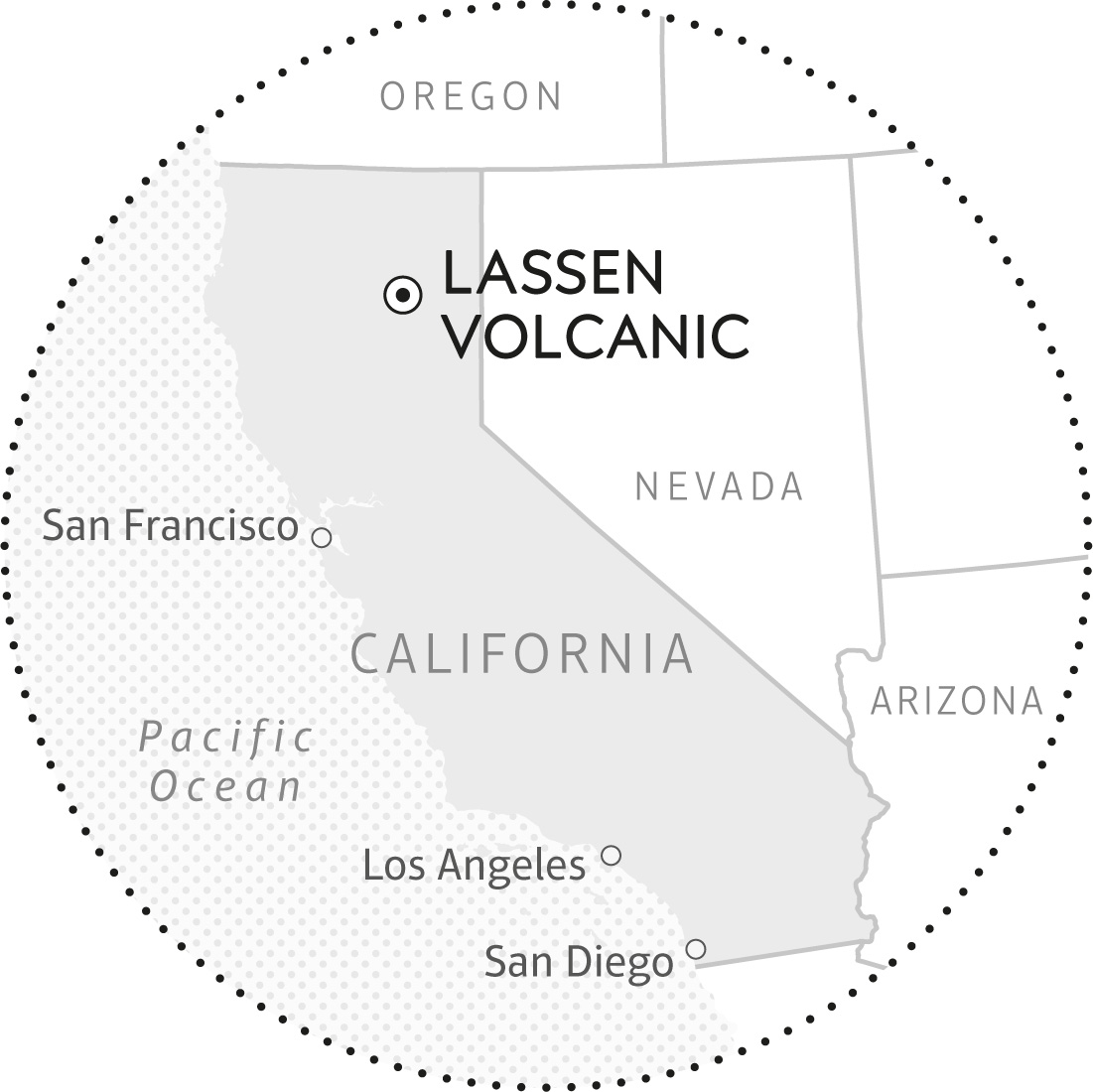
California
LASSEN VOLCANIC
ESTABLISHED 1916
Witness Earth’s geothermic power at Lassen Volcanic, where belching steam vents, bubbling mudpots, and scalding hot springs erupt in a primeval roar.
Arriving in Lassen, you feel like you’re stepping into an alpine wonderland, complete with wildflower-speckled meadows and snow-dusted mountains. But the jagged peaks in the distance tell the tale of the park’s eruptive past, when the serene mountains of today were once roiling volcanoes.
Lassen Volcanic National Park was formed over hundreds of thousands of years by volcanic heat and plate tectonics. Around 825,000 BC, a ring of plug dome volcanoes erupted violently, forming the Lassen Volcanic Center. Lassen is rare, in that it’s one of the few places on Earth where all four types of volcanoes—shield, composite, cinder cone, and plug dome—exist side by side. The iconic Lassen Peak, the park’s dominant feature, is one of the world’s largest plug-dome volcanoes and is still an active force to be reckoned with.
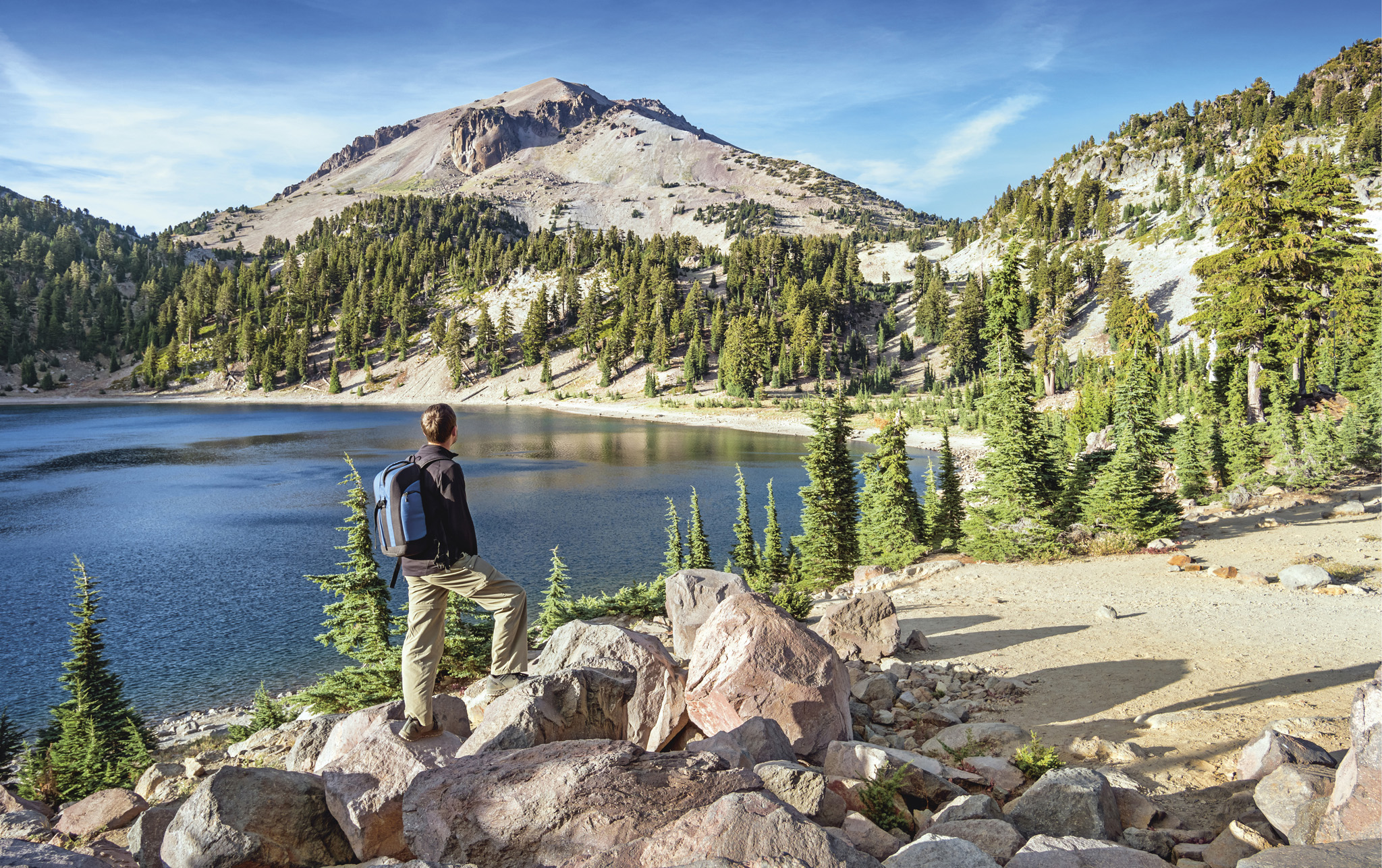
Lake Helen, with Lassen Peak in the background, sits at such a high altitude it may get snow in summer
Land of plenty
For centuries, Lassen was the hunting and fishing grounds of regional tribes such as the Atsugewi, Yana, Yahi, and Maidu. These nomadic peoples didn’t live in Lassen year-round—the winter climate was too harsh. Instead, they migrated to the area in the summer months, when deer grazed in abundance, creeks teemed with trout, and the fertile volcanic soil served up a feast of berries, nuts, and seeds.
In the California Gold Rush of 1848–1855, white settlers came to the region and established many of the current routes through the park. Danish blacksmith Peter Lassen guided pioneers through the Cascade Mountains to the Sacramento Valley, and Lassen Peak bears his name. While gold was never discovered within the park boundary, prospectors grew rich from nearby claims, and towns followed.
10,456
In ft (3,187 m), the height of Lassen Peak.
30
The number of volcanoes in the park.
216
The number of bird species found here.
Rocky top
In 1914, in a belch of steam, Lassen Peak sprang back to life after 27,000 years, forming a new crater on its rocky dome. The mountain continued to erupt periodically for years, with the largest blast in 1915, when it exploded in a devastating burst of lava and ash.
Thanks to the area’s volcanic activity and the stark beauty of its mountains, Lassen Peak and the surrounding volcanos were declared a national park in 1916. To entice visitors to the new park, the Main Park Road was constructed between 1925 and 1935. An architectural feat in its time, the 29-mile (47-km) highway snakes up to an impressive 9,692 ft (2,954 m), making it the highest road in the Cascade Mountains.
Natural and Human History |
|
|
Stories of this geologic marvel’s fiery past show us how the Earth’s forces carved the landscape, and how the original American Indian inhabitants and the European pioneers who came later shaped its future. |
|
825,000 BCA 9-mile (15-km) ring of plug-dome volcanoes erupts, spewing ash and lava and forming the Lassen Volcanic Center. |
|
600,000-350,000 BCThe stratovolcano Mount Tehama explodes, creating a caldera 2 miles (3 km) wide. |
|
1500s–presentFor centuries, Lassen is the fertile hunting and fishing grounds for American Indian tribes such as the Yana. |

|
1850sThe first settlers arrive with the California Gold Rush. Pioneers Peter Lassen and William Nobles build the area’s first trails. |
|
1907Lassen Peak and Cinder Cone are established as National Monuments under President Theodore Roosevelt. |
|
1914After a 27,000-year nap, Lassen Peak Volcano awakens with a bang. A series of eruptions take place until 1917. |
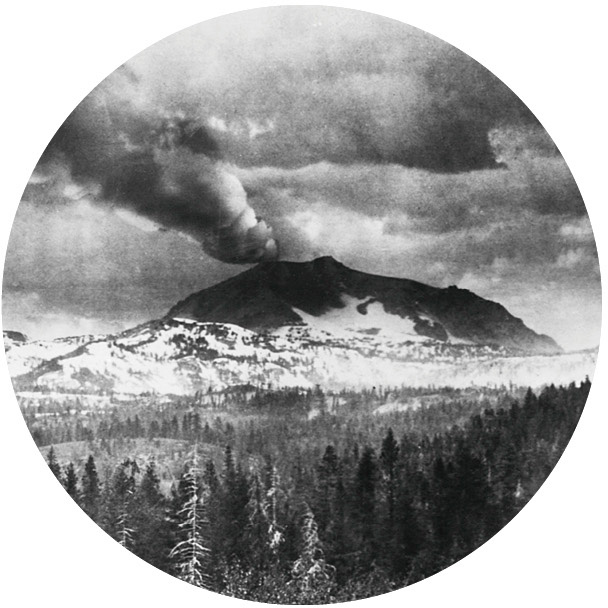
|
1916This active volcano park is established as a national park on August 9, in the midst of its three-year volcanic run. |
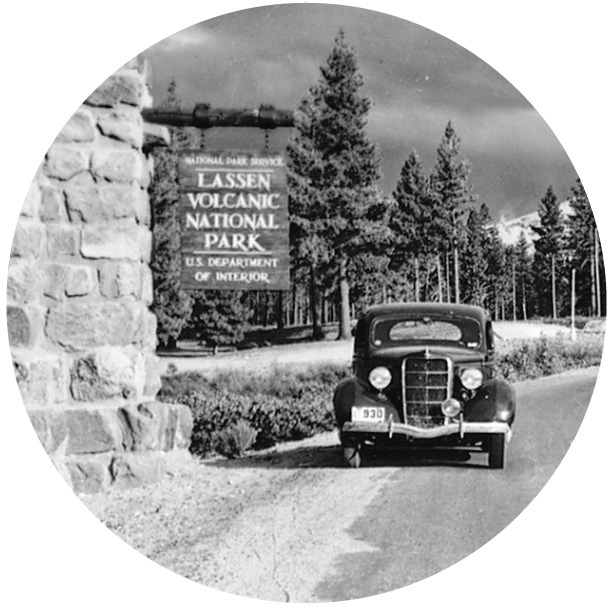
|
PARK PIONEERS
Selena LaMarr
A member of the Atsugewi tribe, Selena LaMarr was the first woman naturalist at Lassen Volcanic. During her 20-year career, which spanned the mid-20th century, she shared her knowledge of tribal life skills, particularly basket weaving and the culinary arts.
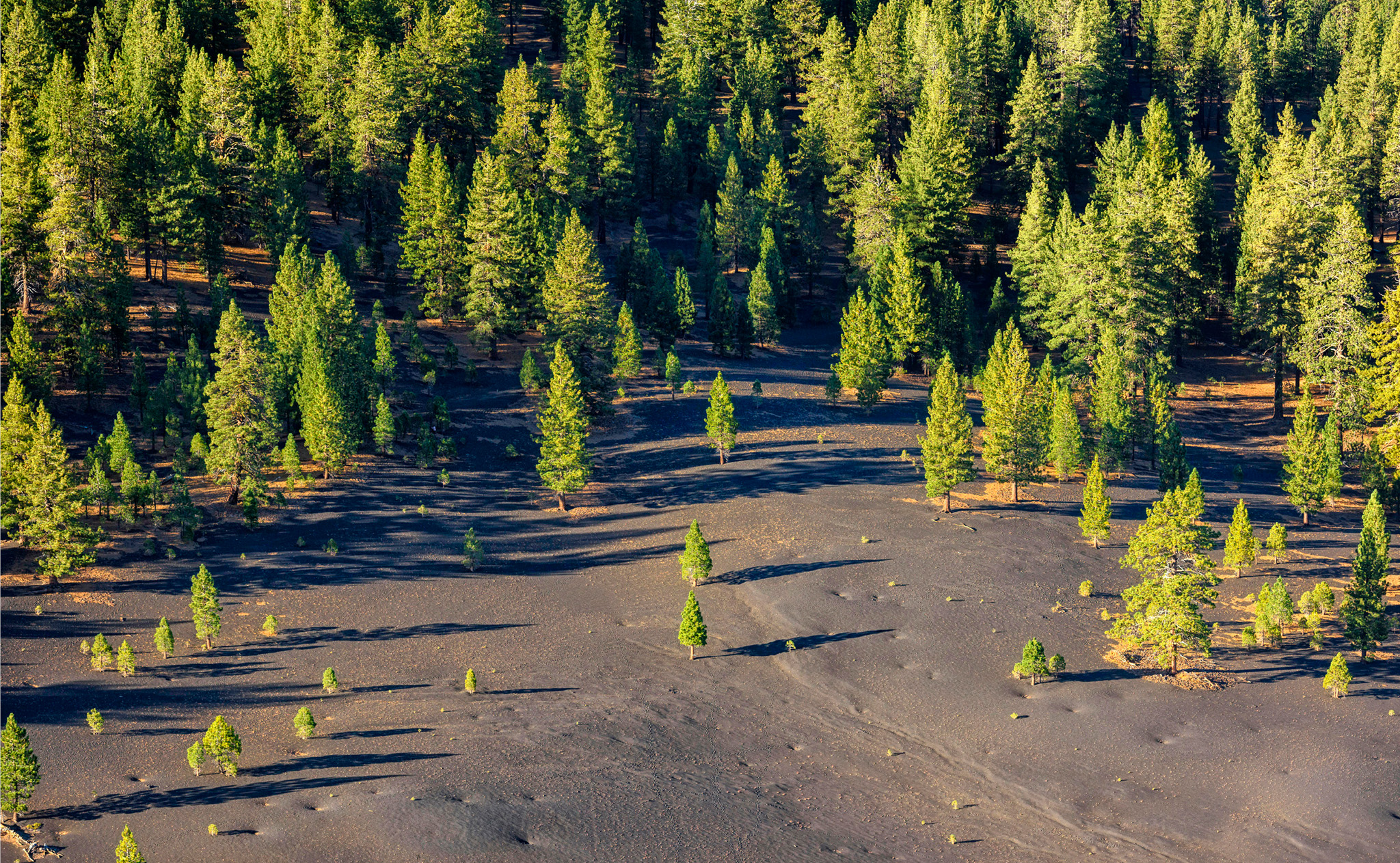
Pine trees sprout up in the Fantastic Lava Beds, seen near Cinder Cone trailhead
A haven for hikers
Much has changed since Lassen’s explosive beginnings. While the land still fumes and belches, these days you can delight in the awesome geothermic features of Lassen safely. Visit Bumpass Hell Basin on a moderate 3-mile (5-km) trail, with views of Lassen Peak and a raised boardwalk that unfurls over simmering mudpots and boiling springs. Take care not to step off the trail—the mud is as hot as ever.
Renowned for its hiking opportunities, the park offers miles of trails that make their way through evergreen forests to the peaks of dormant volcanoes. You can stroll through wildflower-carpeted meadows toward dazzling waterfalls on easy-to-reach family hikes, while thrill-seekers take the climb to the top of Lassen Peak.
![]()
Visit in the early morning, when steam from geothermal activity rises in the crisp air and dew covers the meadows.
Seasonal pleasures
Lassen Volcanic National Park is a year-round destination, and the landscape changes dramatically with the seasons. Springtime brings dazzling displays of local flora, with a spectacular show of multihued wildflowers blanketing the meadows of the valleys. Lassen in the summer, meanwhile, is mountain living at its best, with superb hiking trails leading to volcanic peaks, glacial-blue alpine lakes jumping with fish, and campgrounds cloaked in expansive starry skies.
When the leaves change with the crisp fall air, the park is painted in bright splashes of orange, yellow, and red, and leaf peepers and aspiring photographers abound. On these cold, clear nights, mountain splendor is there for the taking in blessed serenity. Lassen Volcanic National Park receives some of the heaviest snowfall in California, and in the winter the park quiets down under its enchanting white cover. The snow also softens the rugged contours of Lassen’s volcanic peaks and reflects back a burnished alpine glow. Here’s a chance to follow ranger-led snowshoe hikes of the backcountry in the beautiful Manzanita Lake Area or set out on your own to discover the winter wonderland through your own eyes.
Through the Seasons

Spring ▷ The spring months are an idyllic time to explore Lassen, with a display of vivid flowers and thunderous waterfalls that is unparalleled. Witness both on the fantastic Kings Creek Falls Trail, which wends past carpets of purple lupine and yellow mule’s ears to the 30-ft (9-m) falls.

Summer ▷ Manzanita Lake, at the heart of Lassen, offers swimming, kayaking, and fishing in its unforgettable, glacial-blue water in the summer months. Warmer weather makes this season a great time for hiking, too, so try out the Bumpass Hell trail, which is usually not open before July.

Fall ▷ Have the park to yourself in this peaceful period, thanks to milder temperatures and autumnal colors painting the landscape. This is a fantastic time for camping, and the clear nights are perfect for campfire conversations.
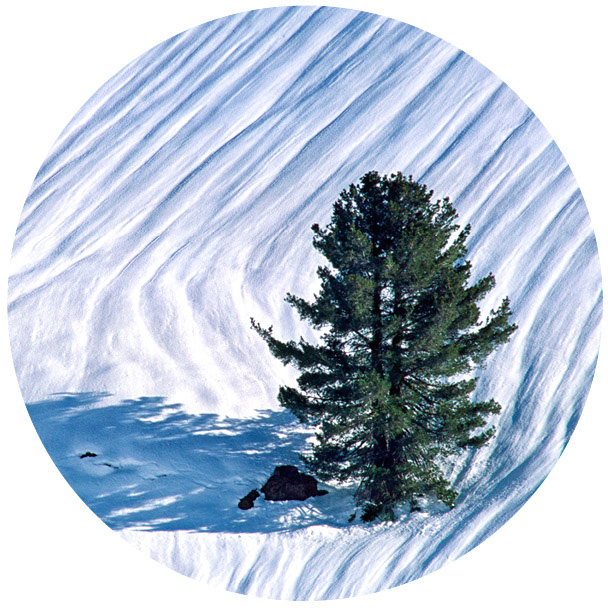
Winter ▷ When snow blankets the Sierra Nevada, the park becomes a chilly, joyous playground. As well as snowshoeing opportunities, there’s also skiing around the Sulphur Works hydrothermal area. And don’t forget sledding and snow camping.
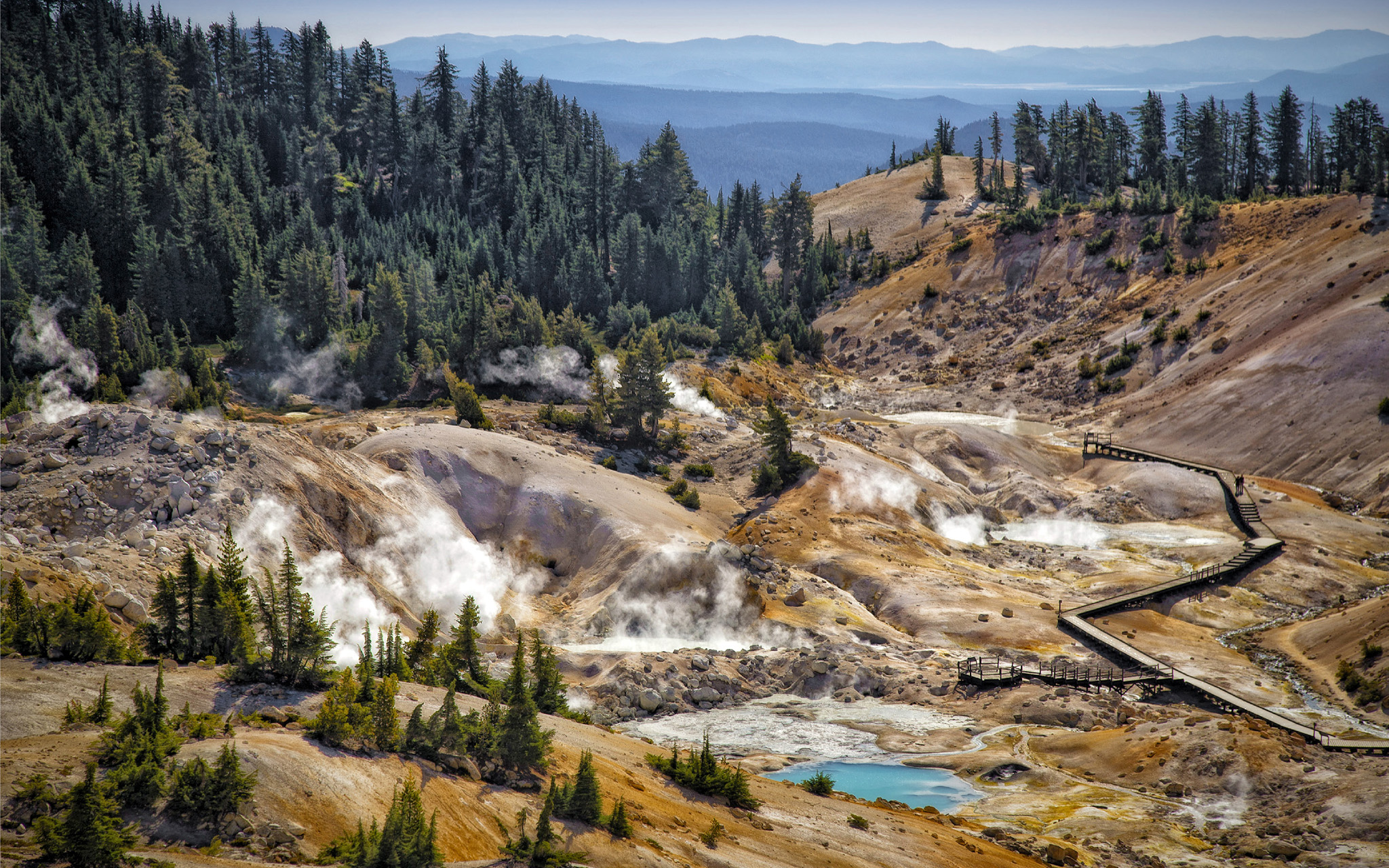
Bumpass Hell gets its salty name from pioneer Kendall Bumpass, who fell into scalding mud and lost a leg
